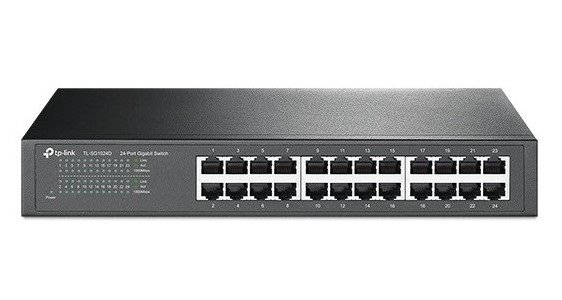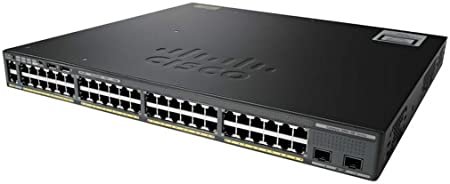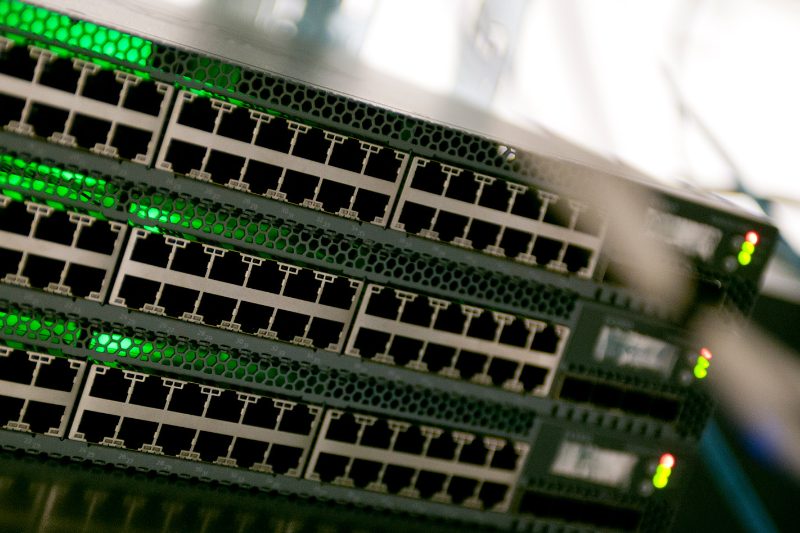Guide For Buying The Best Layer 2 Switch For Medium To Large Networks
A Network Switch Is Like A Network Bridge But With More Ports That Use MAC Addresses To Transfer Data In Layer 2 Or The OSI Data Link.
Layer 2 Switch defines the switch, the types of switches and their differences and introduces the best switches available for medium and large networks.
In selecting the products of this list, we have tried to introduce the best and most efficient Layer 2 switches on the market, which, along with the high quality of the products, has also brought with it user satisfaction.
What is a switch?
A network switch is a hardware that connects different devices (such as IP cameras, computers, and even other switches) to share resources and communicate. The switch receives packets and directs them to their destination on the LAN. In the past, hubs used to connect network devices. But hobbies had many drawbacks. To fix them, bridges creating. They were better than hubs because they created multiple collision domains but had a limited number of ports. Eventually, switches were created and are still widely used. Switches have more ports than bridges, and they can monitor incoming traffic and make frame transfer decisions accordingly. Also, each port on a switch is a separate collision range, and no collisions occur.
Switches are commonly used in large environments and for professional applications. But over time, as the use of surveillance and security cameras expanded, so did the need for switches for home networks. So today, switches have many different uses and are used by many users around the world.
Layer 2 switches only do the switching work and are required to transfer data to the MAC address of each network node. Layer 3 switches, on the other hand, can route packets using IP addresses.
Types of network switches and features that you should pay attention to before preparing the switch:
Unmanaged switches
Unmanaged switches do not need to be configured and managed and act as plug and play devices (connect your devices one by one using Ethernet cables). Everything in these switches is done automatically. In fact, these switches have a fixed configuration and do not allow this configuration to be changed. They can be placed on a table or mounted on a rack. Unmanaged switches are mostly used to connect devices to the edge of the network or in a small independent network with several components. They are usually lower priced and do not look different from management switches. Some of them can control locally via LED indicators.
Smart web switches
Web smart switches are management switches, but they offer a more limited set of features. Smart switches are easy to set up and provide a web interface to configure many features. Smart switches do not have any console port, SSH or Telnet.
Management switches
Management switches also have many configurable features that offer the highest management and control of the previous two types. These switches can manage via a web interface, console port, SSH and Telnet.
Number of switch ports
One of the most important factors to consider is choosing a switch with the right number of ports. For example, if you have 4 devices to connect to, a 5 or 8 port switch will meet your needs. Keep in mind that several ports should be considered as backup ports for possible crashes in the future. On the other hand, you may add other devices to your network in the future and need more ports.
Fast Ethernet is a term that refers to 100 Mbps Ethernet speed, while Gigabit Ethernet means 1000 Mbps.
Obviously, a Gigabit switch is better, but it may not really be necessary, depending on your network settings. Ideal if you need to transfer large amounts of data and have fast low-latency networks.
PoE support
PoE (Power over Ethernet) technology refers to any system that transmits power along with network data over an Ethernet cable. This technology helps reduce costs (no need to install an extra power cord), is safe (protects your devices from high or low voltage), and is flexible. (Compatible devices can install anywhere without the worry of having a power outlet nearby.)
PoE support is obviously an advantage, but these types of switches are more expensive. So, if cost is not an issue for you, buying a PoE switch can be a smart choice.
Recommended switches, desktop or wall switches
Ideally, a switch can install in all three shapes. Recount switches are typically designed for professional and rack-mounted environments, such as data centres. Desktop switches can be installed on all smooth surfaces and have more variety in the market. Wall switches also have kits for wall mounting.
Below is a list of the best Layer 2 switches for medium to large networks. If you are looking for the right switch for your organization or company, we suggest you not miss the list below. In this list, we have listed the key features of each Layer 2 switch and its application.
Note: The order of introducing the best Layer 2 switch in the Iranian market in this article is based on the number of ports. (From low to high)
- In selecting the products of this list, we have tried to introduce the best and most efficient Layer 2 switches on the market, which, along with the high quality of the products, has also brought with it user satisfaction.
- Read the technical specifications of each product and choose the best Layer 2 switch required by your company.
Introducing the best Layer 2 switches
DES-3200-18 D-Link

- Number of ports: 18
- Switch type: managerial
- PoE capability: None
- Location: Recount
The D-Link DES-3200-18 switch, with 16 10/100 Mbps ports, 1 SFP port, 1 Combo 1000BASE-T / SFP port, is a powerful Layer 2 switch with advanced features and a management switch designed Suitable for professional organizations and businesses and use in ETTX and FTTX. Management switches offer more features for traffic control. The DES-3200-18 switch can install in a rack without a fan. Recount switches are used for professional environments and provide easier access for technicians, and are also safer. This switch uses security mechanisms such as 802.1X, P-MAC-Port Binding and DHCP Snooping. It also supports Link Aggregation, which allows you to group multiple ports in parallel to create a single port for better bandwidth and access. For the quality of service (QoS), this switch is from 802. Supports 1p. This standard is a mechanism that allows real-time data transfer to be classified into 8 priority levels in 4 queues.
TEF1024D Tenda

- Number of ports: 24
- Switch type: Unmanaged
- PoE capability: None
- Placement type: Recommend, desktop, wall
The TEF1024D switch is an unmanaged switch from the Tenda brand. Unmanaged switches are not configurable, and you need to install and set them up. This feature saves time and simplifies network setup and expansion. This switch is easily placed on a table or flat surfaces, installed in a rack, and has 24 ports. The TEF1024D switch has a sturdy, compact metal body and is reliable and ideal for years of use. In addition, this switch has a high-performance internal switching power supply. This switch supports automatic MDI / MDIX, and you no longer have to worry about the type of cable. You need to connect and use the cable. Automatic MDI / MDIX technology, in fact, switches automatically between MDI and MDIX. The TEF1024D switch is suitable for medium-sized organizations and businesses.
G3224T IPcom

- Number of ports: 24
- Switch type: managerial
- PoE capability: None
- Location: Recount
The IP32 com Layer 2 G3224T switch has 24 Gigabit Ethernet ports and 2 SPF slots designed to run high-performance, high-speed networks. This switch uses 802.3x current control for full-duplex mode and backpressure current control for half-duplex mode. The G3224T switch supports Layer 2 Link protection technology and has a non-blocking architecture. It also supports VLAN and QoS creation. QoS provides traffic prioritization for services such as VoIP that are sensitive to latency. The G3224T switch is managed and has a web-based management interface.
Management switches provide more control over how data is transmitted over the network and the people who can access it, making them flexible. This model of IPcom can be installed in the rack. In addition to being more secure and easily accessible, Rack-mounted switches are less prone to heat and breakdown due to proper ventilation.
This switch is suitable for professional environments and large businesses and data centres with its powerful security features and other practical features. With the ease of use that these switches provide, you can quickly set up and deploy your network.
TL-SG1024D TP-Link

- Number of ports: 24
- Switch type: Unmanaged
- PoE capability: None
- Placement type: Recommend, desktop
The TL-SG1024D switch, a non-management switch from the TP-Link brand, with 24 ports of 10/100/1000 Mbps, increases your network capacity and enables fast transfer of large files. It has a table. Therefore, users at home, office, or anywhere else can share large files without speed issues. Instant transfer of graphic, CGI, CAD or multimedia files across the network is also possible. Unmanaged switches are usually less expensive and are plug and play devices that do not require configuration.
All 24 ports of this switch support automatic MDI / MDIX. You no longer have to worry about the type of cable and connect the cable. With it, it does not matter at all whether you use straight-through or crossover cables. In this switch, Auto-negotiation on each port detects the network device link speed (10, 100 or 1000 Mbps) and is intelligently adjusted for compatibility and optimal performance.
The TL-SG1024D switch, with its efficient and innovative energy-saving technology, can save up to 20% in power consumption (maximum power savings compared to conventional TP-LINK switches, and actual savings may vary by circumstances). . The TL-SG1024D can automatically detect the status of each port and reduce the power consumption of ports that are not in use.
LGS124P-EU Link cis

- Number of ports: 24
- Switch type: Unmanaged
- PoE capability: has.
- Location: Recount
The LGS124P-EU Switch is an easy-to-install 24-port Linksys switch that supports the 802.3az network standard developed by the IEEE to reduce network power consumption without affecting link integrity or network performance. The LGS124P-EU non-management switch, whose 12 ports (ports 1 to 6 and 13 to 18) support the PoE + standard, can increase network performance and data transfer speed with Gigabit ports. This model from the Link Cis brand is a recumbent switch. Recount switches, as their name implies, can be installed in the rack.
These switches are more secure and make it easier for technicians and staff to maintain. Therefore, these switches are suitable for data centres and in all environments and large and professional businesses. Because these switches are easy to install and operate, they are very suitable for network development quickly. The LGS124P-EU switches are CE, FCC Class A, UL and CB compliant.
In this switch, traffic priority can be determined base on QoS. The Auto-Sensing feature is also supported on the LGS124P-EU switch ports, allowing them to automatically detect the current LAN speed and apply their configurations accordingly.
DES-3200-28 D-link

- Number of ports: 28
- Switch type: managerial
- PoE capability: None
- Location: Recount
Another switch that we will introduce in this article from the DES-3200 D-Link series is its 28-port model. This switch includes 24 fast Ethernet ports, 2 SPF ports and 2 Combo 1000BASE-T / SFP ports. It is a Layer 2 management switch and is designed for ETTX, FTTX and organizations. Management switches allow you to configure each switch port with the desired settings and also allow you to manage, configure and monitor the network from different angles. They also provide more control over how data is transmitted over the network and who can access that data. This switch has a user-friendly web-based graphical user interface and provides easy management. The DES-3200-28 switch also supports Link Aggregation, which allows you to group ports to create a single port. It also uses QoS to prioritize network traffic.
TL-SG1428PE TP-Link

- Number of ports: 28
- Switch Type: Management (Smart)
- PoE capability: has.
- Location: Recount
This TP-Link switch has 26 10/100/1000 Mbps ports, 24 of which support PoE + and 2 SPF ports. The big difference between PoE and PoE + is the amount of power provided in each standard. Standard PoE can receive 15.4 watts via Cat5 cables. PoE +, on the other hand, can make up to 30 watts available to devices via Cat 5 cables. The TL-SG1428PE TP-Link model has a fan and is recommended for medium-sized businesses. The smart power management feature of this switch protects it from overload. The TL-SG1428PE switch offers high-performance features such as IGMP Snooping, QoS, web-based interface and network monitoring to monitor user behaviour.
Cisco WS-C2960X-48FPS-L

- Number of ports: 48
- Switch type: managerial
- PoE capability: has.
- Location: Recount
The Cisco WS-C2960X-48FPS-L Switch with 48 ports of 10/100/1000 Gbps Ethernet is highly efficient for large to medium-sized businesses. This switch is a Layer 2 management switch from the Cisco 2960X series that provides a flexible network by controlling, managing and prioritizing LAN traffic. These switches provide more control over how data is transmitted over the network and who can access that data. The switch WS-C2960X-48FPS-L is recumbent. As a result, they are easier to access. This switch from Cisco has 802.1x security features, SNMPv3 crypto, Storm Contro, Port Security and IGMP Snooping, which are very effective against security threats. The WS-C2960X-48FPS-L switch uses PoE + technology to transfer power and data from a single wire, saving time and money.
WS-C2960X-48LPS-L Cisco

- Number of ports: 48
- Switch type: managerial
- PoE capability: has.
- Location: Recount
The WS-C2960X-48LPS-L is another management switch from the 2960X series, one of the best Cisco for medium and large businesses, organizations, and offices. It has 48 10/100/1000 Gigabit Ethernet ports that transmit high speeds. Provide. This switch, like most switches in this series, uses the PoE + feature. The WS-C2960X-48LPS-L switch is recumbent and offers many security and management features.

